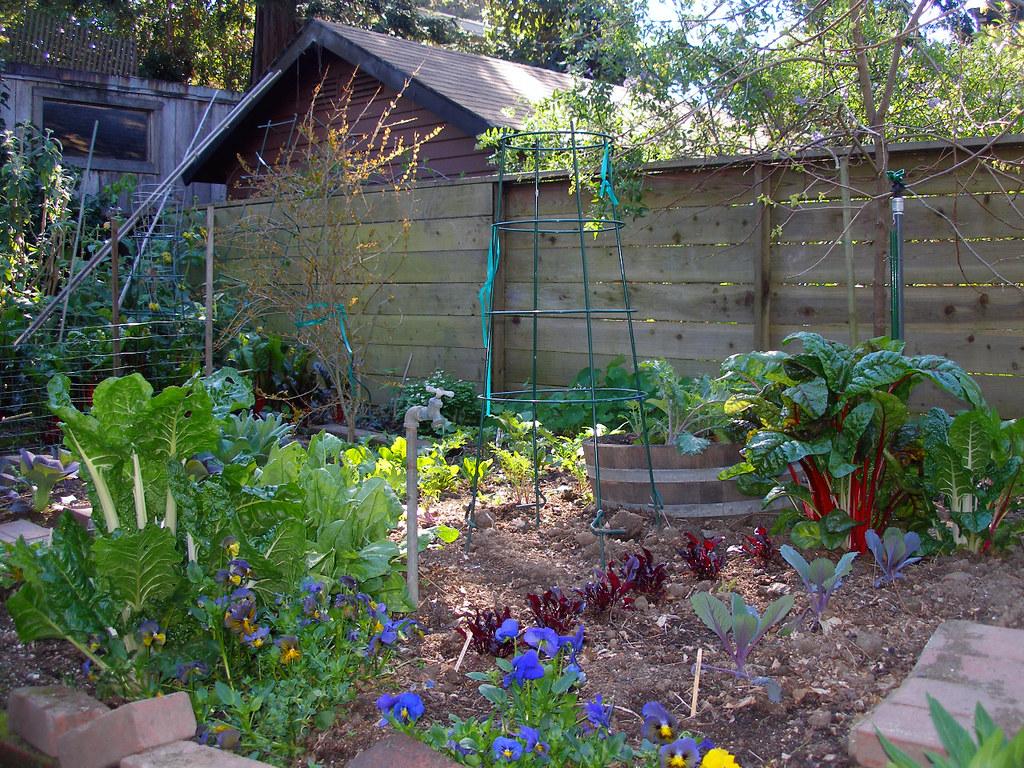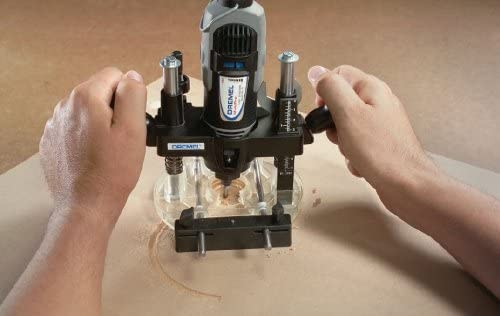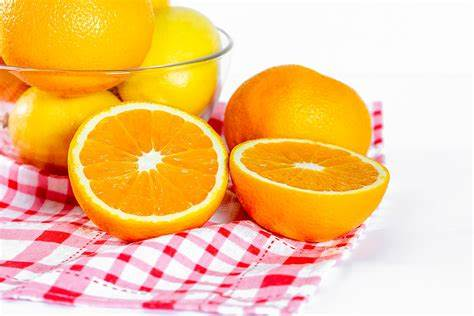Unearthing the Best Soil pH Meter for Garden Enthusiasts and Plant Lovers
Mastering the Science of Soil: The Ultimate Guide to Choosing and Using a Soil pH Meter
Plants struggle to absorb nutrients when the soil pH is too low or too high, leading to stunted growth, yellowing leaves, and even plant death. A soil pH meter is a handy tool that gardeners and farmers use to measure their soil’s pH levels accurately.
It helps them determine their soil’s acidic or alkaline and adjust it accordingly. With a simple reading on a digital screen, they can understand if their plants are getting what they need to thrive.
Soil pH levels range from 0-14, with 0 being highly acidic and 14 being extremely alkaline. A neutral pH level is 7.0; most plants prefer a slightly acidic environment ranging between 6.0-7.5 pH levels depending on the plant type.
Overall, having an adequate understanding of your garden’s soil health through regular testing with the best soil pH meter will help you make more informed decisions about your plants’ care requirements in terms of watering needs, fertilizers application, as well as the type of crops suitable for growing in that particular environment.
Brief description of the importance of soil pH
Soil pH is the measure of acidity or alkalinity in the soil. The scale ranges from 0 to 14, where 7 is considered neutral.
A pH value below 7 indicates the soil is acidic, and a pH value above 7 indicates that the soil is alkaline. Soil pH plays a critical role in plant growth and development as it determines the availability of essential nutrients for plants.
The majority of plants prefer slightly acidic or neutral soils to grow optimally. Maintaining the correct soil pH level cannot be overstated, as it directly affects plant health, yield, and quality.
Soil acidity or alkalinity can impact nutrient availability, microbial activity, and plant metabolism, among other factors. Different plants thrive under different soil acidity levels; thus, maintaining specific pH levels is necessary for various plants’ optimal growth and health.
For instance, blueberries require an acidic soil PH level (4-5), while potatoes prefer slightly acidic soils (5-6). If these conditions are not met, it can lead to stunted plant growth, poor yields, or even death.
In gardening practices such as fertilizing or applying pesticides, knowing your soil’s PH level can help determine which nutrients your crops need more than others. This knowledge enables you to adjust your fertilizers accordingly, reducing wastage while promoting healthy crop growth that yields better.
Explanation of the role of a soil pH meter in gardening and plant care
Soil pH meters help you accurately measure your soil’s acidity or alkalinity, allowing you to make informed decisions about adjusting your soil for optimal plant growth. Most plants have specific pH requirements for optimal growth that fall within a narrow range.
A soil pH meter helps ensure that your garden’s soil stays within the ideal pH range for specific plants by taking accurate measurements with a probe inserted into the earth around your plant roots.
By knowing what adjustments are needed to reach your desired pH level, you’ll be able to create ideal growing conditions that promote healthy plant development throughout each growth stage and lead to an abundant harvest at harvest time!
Understanding Soil pH and Its Impact on Plants
Different plants thrive in different pH levels; for instance, vegetables like tomatoes and peppers prefer slightly acidic soils (pH level between 5.5-6.8), while blueberries prefer highly acidic soils with a pH level between 4-5.5. Soil pH affects nutrient availability, microbial activity, and other biological processes influencing plant health.
The impact of soil pH on plant growth cannot be overstated. Soil acidity affects how nutrients dissolve in water and become available for absorption by plants’ roots.
For example, as the soil becomes more acidic (lower pH), aluminum and manganese become more soluble and can reach toxic levels that harm plants’ roots. On the other hand, when soil is too alkaline (higher pH), essential nutrients like iron, zinc, and copper may become less available for uptake by plants’ roots.
Moreover, soil microorganisms play an essential role in breaking down organic matter into nutrients that plants can absorb; these microorganisms have specific optimal living conditions that vary depending on the soil’s pH level.
Therefore, soil acidity or alkalinity changes will directly affect these vital biological activities in the rhizosphere – the area around a plant’s root where most microbial activities occur – significantly impacting overall plant health and growth.
Testing your garden’s soil regularly using a reliable pH meter can help you determine whether your crops are getting enough nutrients to grow optimally or whether you need to adjust your gardening practices,
Definition of soil pH
Soil pH is an essential factor affecting the growth and development of plants, as it determines the availability of nutrients and minerals in the soil. pH stands for “potential hydrogen” and refers to the concentration of hydrogen ions (H+) in soil solution. The pH scale ranges from 0 to 14, with a neutral value 7.0.
Values below 7.0 are considered acidic, while values above 7.0 are alkaline or basic. The acidity or alkalinity level of soil depends on several factors, such as climate, parent material, vegetation cover, and human activities like fertilization and irrigation practices.
Acidic soils (pH < 6) can occur naturally in regions with high rainfall or with abundant acidic rocks. In contrast, alkaline soils (pH > 8) can be found in arid regions or areas with high concentrations of calcium carbonate.
The impact of soil pH on plant growth and nutrient availability varies depending on the plant species involved. Some plants prefer acidic soils, while others thrive better in alkaline soils.
Generally, most fruits and vegetables grow best in slightly acidic to neutral soils (pH between 6.0-7.5). A pH level that is not optimal for a specific plant species may lead to poor growth rates, low yields, and leaf damage due to nutrient deficiencies or excesses, among other issues.
Understanding soil pH is crucial for gardeners who aspire to have healthy and productive plants in their gardens or farms. A soil pH meter is a handy tool that helps measure acidity levels accurately so that appropriate corrective measures can be taken to maintain ideal growing conditions for different plants at all times.
Effects of different pH levels on plant health and growth
Soil pH plays a critical role in determining the nutrient availability of plants. It affects the solubility, mobility, and uptake of essential nutrients like nitrogen, phosphorus, and potassium.
Different plants have different optimal pH requirements for their healthy growth and development. Most plants prefer a slightly acidic soil with a pH range between 6.0 to 7.0, but some plants, like blueberries, require a more acidic soil with a pH range between 4.5 to 5.5.
In soils with high alkalinity (pH above 7), certain nutrients like iron, zinc, and manganese become less available for plant uptake, resulting in nutrient deficiencies and stunted growth. For example, tomatoes grown in alkaline soil can develop blossom end rot due to calcium deficiencies which cause black spots on the bottom of the fruit.
On the other hand, soils with high acidity (pH below 6) can also cause nutrient imbalances and toxicity issues if not corrected promptly. Too much acidity can lead to aluminum toxicity which damages roots and reduces nutrient absorption by affecting the ability of roots to take up water through osmosis.
Thus maintaining an appropriate soil pH is paramount for optimal plant health and yield production. A soil pH meter is necessary to detect any deviations from ideal ranges so you can take corrective measures before plant health deteriorates further due to poor nutrition uptake caused by incorrect soil conditions that could have been prevented by timely intervention
Importance of maintaining the correct pH levels for specific plants
Maintaining specific plants’ pH levels is crucial for achieving healthy growth and optimal yields. Different plants have different pH requirements, and if the soil pH is too high or too low, it can lead to nutrient deficiencies or toxicities, stunted growth, reduced yield, and even plant death.
Therefore, knowing the ideal soil pH range for your plants is essential. For instance, most vegetable crops grow best in slightly acidic soil with a pH range of 6.0 to 7.0.
If the soil pH is too low (below 5.5), it can inhibit root growth and nutrient uptake, leading to stunted plants with yellowed leaves. On the other hand, if the soil pH is too high (above 7.5), it can cause iron deficiency in some crops like beans and tomatoes.
Similarly, fruit trees have specific soil pH requirements depending on their type and variety. For example, citrus trees prefer slightly acidic soil with a pH range of 6.0 to 7.0. In contrast, apple trees thrive in neutral to slightly acidic soil with a pH range of 6.0 to 7.0.
Moreover, flowers vary in their ideal pH ranges depending on their type and variety. For instance, roses prefer slightly acidic soil with a pH range of 6.0 to 6.5. At the same time, hydrangeas require more acidic soils with a lower range of around 4-5.
Maintaining the correct pH levels for specific plants is critical in ensuring healthy growth and optimal yields in your garden or farm production system.
What is a Soil pH Meter, and Why Do You Need One?
A soil pH meter is an essential tool for gardeners and plant enthusiasts as it helps to measure the pH levels of the soil. Soil pH is the measurement of the acidity or alkalinity of the soil, and it plays a crucial role in plant growth and health. A soil pH meter measures the amount of hydrogen ions in the soil, determining its acidity or alkalinity.
The primary reason for using a soil pH meter is to ensure your plants grow optimally. Different plants thrive at different pH levels, so it’s pertinent to maintain the correct levels for specific plants.
For instance, most vegetables prefer slightly acidic soil with a pH range between 6.0 – 7.5, while some fruits require more acidic soils between 4.5 – 5.0. In addition to maintaining ideal conditions for your plants, using a soil pH meter helps diagnose plant problems.
For instance, if your plant leaves turn yellow or brown, this could be due to an imbalance in nutrients or improper pH levels that affect nutrient uptake and absorption by roots. It’s important to note that measuring water alone is insufficient as it does not accurately reflect what’s happening below ground level; therefore, using a reliable soil pH meter is necessary for accurate readings and better outcomes for your garden and landscaping projects.
Detailed description of a soil pH meter
A soil pH meter is a device used to measure the acidity or alkalinity of the soil. It works by measuring the concentration of hydrogen ions in the soil solution. A pH meter consists of a probe inserted into the soil, which then sends an electrical signal to a display unit showing the pH reading.
Different types of soil pH meters are available on the market, ranging from manual to digital models. Manual soil pH meters are inexpensive and simple to use.
They consist of a long metal or plastic probe with markings indicating different pH levels. To use a manual meter, insert it into the soil and compare its reading to the markings on the probe.
While manual meters are easy to use, they are less accurate than digital models. They can be affected by variations in temperature and moisture levels. Digital soil pH meters are more accurate than manual models and provide quicker results.
They consist of a probe with sensors that detect changes in voltage caused by changes in acidity or alkalinity levels in the soil. The sensors send this information to a display unit that shows you an accurate reading of your soil’s pH level within seconds.
Some digital models also come with additional features such as measuring moisture content, temperature, and light intensity levels in addition to pH measurements, making them multi-functional tools for gardeners who want all-in-one devices for their plants’ needs. Digital PH meters also come with replaceable probes, so you can change them if they become damaged or worn over time.
Explanation of how a soil pH meter works
A soil pH meter is a device that measures the acidity or alkalinity of soil. The pH level is expressed on a scale from 0 to 14, with 7 being neutral.
A value lower than 7 indicates acidity, while values above 7 indicate alkalinity. Most plants grow best within a specific pH range, which varies depending on the type of plant.
The electrode in a soil pH meter consists of a glass bulb filled with a special gel that reacts with hydrogen ions in the soil to generate an electrical signal. This signal is proportional to the concentration of hydrogen ions in the soil, determining its acidity or alkalinity.
First, use a soil pH meter to ensure it is adequately calibrated according to manufacturer instructions. Then insert the probe into moistened soil at various locations around your garden or planting site and wait for a stable reading to be displayed on the meter.
Repeat this process at different depths within each location for accuracy and consistency. It’s essential to clean and store your meter correctly after each use to ensure its longevity and accuracy over time.
Importance and benefits of using a soil pH meter in your garden
Using a soil pH meter in your garden can have numerous benefits that can help you attain optimal plant growth and health. First, using a soil pH meter ensures that you maintain the correct pH levels for your plants, which is crucial for their growth and development. Different plants require different levels of acidity or alkalinity to thrive, so using a soil pH meter helps you monitor and adjust the soil accordingly.
Moreover, soil pH affects nutrient availability in the soil. Certain nutrients become unavailable to plants when the pH is too high or too low, leading to deficiencies and stunted growth.
As such, by using a soil pH meter to maintain optimal levels of acidity or alkalinity in your garden, you ensure that your plants have access to all essential nutrients necessary for robust growth and development. Another key benefit of using a soil pH meter is cost-effectiveness.
By knowing the exact ph level in your garden’s soil through regular monitoring with a ph meter, you avoid guesswork on what fertilizer or amendments are needed for optimum plant growth. You only apply what is required based on the results from the ph test kit instead of trying different fertilizers blindly without knowing if they are necessary to improve plant health.
Investing in a reliable and accurate soil pH meter can have many benefits when gardening. It can save time and money by eliminating guesswork with fertilizers or amendments application while providing adequate care, resulting in healthier plants with better yields at harvest time.
Key Features to Look for When Buying a Soil pH Meter
When purchasing a soil pH meter, it is essential to consider several crucial factors that will ensure you get the most value for your investment. Accuracy is the most critical factor when selecting the best soil pH meter.
A highly accurate pH meter will give you reliable results and enable you to make informed decisions about your garden’s needs. Choosing a digital soil pH meter is advisable as it provides an accurate reading of the soil’s pH, which helps identify any chemical imbalances in real-time.
Durability is another crucial factor when selecting the best soil pH meters. Since these devices are primarily meant for outdoor use, buying a fragile device that can break easily after one or two uses makes no sense.
The ideal choice would be a product with sturdy construction materials such as metal or high-quality plastic that can withstand harsh weather conditions and accidental drops. The ease of use of a soil pH meter is also an important consideration when shopping for one.
The device should be user-friendly so that even beginners can operate it easily. An intuitive interface and clear instructions on calibration and operation should be included in the package to guarantee ease of use.
Moreover, if you want more convenience in caring for your garden, look for products with features like automatic shut-off functions or backlit screens that enable easy reading even at night or under low-light conditions. Ultimately, choosing the best soil pH meter requires careful consideration of multiple factors, such as accuracy, durability, and ease of use, before making any purchase decisions.
While other factors like price and additional features (e.g., multi-functionality) are essential considerations, too, they should maintain accuracy and durability since these two features determine how valuable and long-lasting your device can be. By weighing all these critical factors against each other and matching them with your gardening needs, you’ll surely find the best product that works best for you!
Highlighting additional features like multi-functionality (pH, moisture, light)
Multi-functionality is a highly sought-after feature in a soil pH meter, providing gardeners with more comprehensive information about their plants and soil. Many modern soil pH meters come with additional sensors that measure moisture and light levels, which can significantly impact plant growth and health. Measuring moisture levels is particularly helpful for gardeners who want to ensure that their plants receive the optimal amount of water.
If the soil is too dry or too wet, it can lead to stunted growth or even death of the plant.
Light levels are also crucial for plant growth, as they affect photosynthesis – the process by which plants convert light into energy.
By measuring light levels in your garden, you can determine whether your plants receive sufficient sunlight or need to be moved to a different location. This data can also be used to help you choose which types of plants will thrive in certain areas of your garden.
Another feature common in multi-functional soil pH meters is temperature measurement. Soil temperature affects plant growth, including germination rate, root development, and nutrient uptake.
Temperature measurement allows you to monitor the temperature of your soil, ensuring an optimal growing environment for your plants, especially during winter months when temperatures drop significantly. Multi-functional soil pH meters provide a range of valuable information that goes beyond just measuring pH levels.
Additional features such as moisture, light, and temperature measurement allow gardeners to monitor their plant’s growth conditions accurately and make necessary adjustments based on accurate data instead of guesswork or assumptions. When considering purchasing a soil pH meter with these additional features, consider what type of plants you will be growing to get one suited to meet those needs.
Importance of considering the type of plants and soil you have when choosing a meter
When selecting the best soil pH meter, it is essential to consider the type of plants and soil you have. Different plants have varying pH requirements, and the soil type can influence pH levels.
For example, acid-loving plants such as azaleas and blueberries require a more acidic soil with a pH between 4.5-5.5, whereas vegetables like tomatoes prefer a slightly alkaline soil with a pH between 6-7. Soil type also plays an important role, as clay soils tend to be more alkaline, while sandy soils are more acidic.
For instance, if you have a variety of plants in your garden or greenhouse that requires different pH levels, invest in an adjustable meter that allows you to calibrate the readings according to specific plant requirements. Some meters come with pre-set calibration options for particular plant types, making it easier for beginner gardeners.
Additionally, when selecting a soil pH meter for testing outdoor garden beds or plots versus indoor potted plants, there may be differences in what works best for each setting. For example, if you frequently move potted plants from one location to another inside your home or office space, a handheld digital meter with moisture level testing may be ideal since this feature will help determine whether the plant needs watering and adjusting its pH level.
Understanding what type of soil and plants are present is crucial when selecting a suitable soil pH meter. Different meters offer various calibration options, such as pre-set calibrations based on plant types or adjustable settings. These allow users to manually set their desired reading range, making them ideal for different gardening needs and skill levels, from beginner hobbyists to professional horticulturists alike.
No products found.
How to Use and Maintain a Soil pH Meter
Using and maintaining a soil pH meter is crucial to getting accurate readings, which will help you determine whether the soil is optimal for your plants. Here are some steps to follow when using a soil pH meter:
First, use a soil pH meter to ensure the probe is clean and dry. Insert the probe into the soil until it reaches your plant’s root zone.
Wait for 30 seconds or until the reading on the meter stabilizes. Take note of your reading and compare it with your plant’s ideal pH range.
When taking readings in different areas of your garden, clean and rinse off the probe before inserting it into another spot to avoid contamination from other soils. If you are taking readings from multiple plants, it’s essential to label each sample so you keep them distinct.
Maintaining your soil pH meter requires proper handling, cleaning, and storage. After each use, clean off any dirt or debris on the probe with a soft-bristled brush or gently wipe it with a damp cloth before drying it thoroughly.
It’s also vital to calibrate your soil pH meter as per instructions from its manufacturer—usually after every five uses or at least once per month—to ensure accurate readings, as calibration helps offset any minor drifts in accuracy over time. Following these simple steps when using and maintaining your soil pH meter can ensure long-lasting accuracy in determining whether your garden’s soil is optimal for healthy plant growth.
Step-by-step guide on how to use a soil pH meter
Using a soil pH meter is easy and can provide accurate readings in just a few minutes. Here is a step-by-step guide on using a soil pH meter:
- Read the instructions: Before using it, read the instructions carefully to ensure you know how to operate it correctly.
- Prepare the soil sample: Take a small amount of soil from the desired area and remove any debris or rocks. Use distilled water to moisten the soil sample if it is too dry.
- Insert the electrode: Turn on your soil pH meter and allow it to warm up for a few minutes. Then insert the electrode of your meter into the prepared soil sample, ensuring it is fully submerged.
- Wait for results: Wait for your soil pH meter to stabilize before taking readings (usually 1-2 minutes). The reading will appear on the display screen of your pH meter once stabilized.
- Record your results: Write down or record the reading you obtain from your device to accurately record each measurement. 6. Clean and store properly: Always clean off any excess dirt from your device before storing it after each use, and keep it in its protective case when not in use.
- Calibrate regularly: It’s essential to periodically calibrate for optimal accuracy; this helps ensure that your subsequent readings are reliable by testing a calibration solution provided by the manufacturer.
Following these steps, you can quickly obtain accurate readings using your soil pH meter at home without professional assistance or experience with gardening tools and equipment.
Maintenance tips to ensure the longevity and accuracy of your soil pH meter
Maintenance is crucial to ensure the longevity and accuracy of your soil pH meter. Here are some tips to keep in mind:
Firstly, it is essential to clean the sensor probe after each use. Use a soft cloth or tissue to carefully wipe the probe, making sure not to damage it.
Avoid using water or any cleaning solution on the probe, which can affect its accuracy.
Secondly, calibrate your soil pH meter regularly.
Most meters come with instructions on how to calibrate them correctly. Calibration ensures that your meter is reading accurately and will help you maintain consistent and accurate readings over time.
It is recommended that you recalibrate your meter at least once a month.
Thirdly, store your soil pH meter in a safe and dry place when not in use.
Exposure to moisture can damage the sensor probe and affect its readings. Please keep it away from direct sunlight or extreme temperatures, which can also affect accuracy.
Always check for damaged parts before using your soil pH meter. If any part is damaged or worn out, replace it immediately, as this can cause inaccurate readings and reduce the lifespan of your soil pH meter.
Following these simple maintenance tips ensures that your soil pH meter provides accurate readings for years. Regular cleaning, calibration, proper storage, and checking for damages are all important steps in maintaining the longevity and accuracy of your soil pH meter.
Common mistakes to avoid when using a soil pH meter
While using a soil pH meter can effectively maintain healthy plants, gardeners must correct several common mistakes when using these devices. By avoiding these pitfalls, you can ensure the accuracy and longevity of your soil pH meter.
One common mistake is not calibrating the meter before use.
It’s essential to calibrate the device every time you use it because even minor variations in temperature or humidity can affect its accuracy. Please do so to avoid skewed readings, causing you to make incorrect adjustments to your soil’s pH level. To calibrate your soil pH meter, immerse the probe into a solution with a known pH level and adjust accordingly.
Another mistake gardeners frequently make is failing to clean their soil pH meters after each use. Soil and other debris can accumulate on the probe over time, making it difficult for the device to take accurate readings. To avoid this problem, thoroughly clean your soil pH meter after each use and store it in a dry place without exposure to extreme temperatures or moisture.
Many gardeners need to check their batteries regularly or replace them as needed. A dead battery will render your device useless, and it’s frustrating when you need it most during the gardening season! To avoid this issue, always check your device’s battery status before using it and replace batteries as necessary.
By avoiding these common mistakes when using a soil pH meter, you can get more accurate readings of your soil’s acidity level and maintain healthy plants all year round!
Frequently Asked Questions
How do I calibrate my soil pH meter?
To calibrate your soil pH meter, follow these steps:
1. Obtain the appropriate calibration solution for your meter – usually 4.0 or 7.0, depending on the type of plants you have.
2. Immerse the electrode in the calibration solution and wait for a few seconds until the reading stabilizes.
3. Adjust the reading to match that of the calibration solution by using a small screwdriver to turn the adjustment knob.
4. Rinse off the electrode with distilled water. It would be best to calibrate your soil pH meter before each use to ensure accuracy.
Can I use a soil pH meter for hydroponic gardening?
Yes, a soil pH meter can be used for hydroponic gardening, but it depends on what kind of hydroponic system you are using and whether or not it’s compatible with a standard soil pH tester which has an electrode used to measure water-based solutions’ conductivity rather than surrounding air’s moisture level like in some systems used in hydroponics.
For example, if you’re using an aeroponic system where roots are suspended in air and misted with nutrient-rich water periodically, then measuring your growing medium’s moisture level is essential rather than testing its acidity level as it would be futile since there wouldn’t be any medium to test anyway!
In contrast, if you are using other types of hydroponic systems such as deep water culture or nutrient film technique (NFT), then a reliable and accurate soil pH tester can help maintain optimal growth conditions by measuring nutrient levels against acceptable limits.
Why is my soil pH fluctuating even though I haven’t changed anything?
Soil pH can fluctuate for various reasons, including natural changes in soil composition due to weather patterns or soil processes like microbial activity.
It is also possible that nearby construction or the use of chemicals like fertilizers and pesticides can impact the pH level of your soil. Additionally, plants themselves can alter the pH level of the soil they are growing in by releasing exudates as they grow.
Monitoring your soil’s pH levels regularly and taking action to correct any fluctuations is essential for ensuring optimal plant health and growth. If you notice significant changes in your soil’s pH levels, re-test your soil and adjust accordingly with recommended products or by altering watering habits.
Addressing Common Questions and Misconceptions about Soil pH Meters:
Several questions and misconceptions arise When using a soil pH meter. In this section, we will address some of the most common ones.
1. Can I use my regular pH meter for testing soil?
One of the most common misconceptions is that you can use a regular pH meter for testing soil, but this is different. Soil has more elements than water and requires a specialized instrument known as a soil pH meter.
A regular pH meter may not give accurate readings since it only accommodates other minerals in the soil.
2. Will my plants die if I do not measure soil pH?
An optimal soil pH level is crucial for plants’ survival since it affects how roots take nutrients. However, not measuring it does not necessarily mean your plants will die.
Most plants, like blueberries or azaleas, can adapt to conditions except those with strict requirements.
3. Can I rely on universal indicators to test my soil?
Universal indicators help tell if your soil is alkaline or acidic. Still, they need more accuracy when determining specific levels different plants need. Using a specialized tool such as a digital or analog meter ensures precision and accuracy.
4. Can I reuse the same probes on different types of soils?
Soil probes contain electrodes that come into contact with your garden’s dirt, and they should be cleaned after every use to maintain their accuracy and longevity.
It would be best to clean them using distilled water rather than tap water since trace minerals present in tap water could interfere with the results of future tests.
Understanding these common questions and misconceptions can help you make informed decisions when choosing the right tool for your gardening needs while ensuring that your plants thrive at optimal conditions for growth and health benefits in return!
Conclusion
Maintaining a healthy pH level in your soil is one of the most critical aspects of gardening and plant care. It is the key to ensuring that your plants receive all the necessary nutrients to grow and thrive.
A soil pH meter is an essential tool for all gardeners, whether a novice or an expert, as it helps you accurately monitor the pH levels in your soil. This article has reviewed some of the best soil pH meters on the market and highlighted what to look for when choosing a meter.
Now let’s recap why this tool is so important. Firstly, using a soil pH meter guarantees that you are always giving your plants precisely what they need.
Different plants require different levels of acidity or alkalinity in their soils; therefore, monitoring your garden’s pH levels with a high-quality instrument ensures that no plant suffers from improper pH conditions. It gives you peace of mind knowing that you won’t waste time or money on failed crops due to incorrect soil conditions, saving you time and resources.
Secondly, using a soil pH meter helps prevent common gardening problems like yellowing leaves, stunted growth, root rot diseases, and nutrient deficiencies by alerting users when their garden’s acidity or alkalinity levels swing out of balance. Soil PH meters help provide early detection, so corrective actions can be taken promptly before it’s too late for them.
3 Best Riding Lawn Mowers Under $2000 (2024) (wherecanibuythat.us)
Owning a reliable soil ph meter allows gardeners to detect any potential issues with their garden early on and take appropriate action immediately, preventing damages from being irreversible. This tool also makes it easier to determine how much fertilizer or organic matter needs to be added based on readings from the device.
The best part about having such an instrument at hand is that it enables you always to stay ahead—going any step further than just relying on visual cues saves time in diagnosing problems as this information can help establish which course of action needs to be taken quickly. Investing in a soil pH meter is crucial for any gardener who wants to keep a healthy garden.
Choosing the proper pH meter guarantees you’ll be able to monitor your plants’ health quickly and efficiently, making it easier to maintain optimal growing conditions. By taking advantage of this tool, you’ll save time and money in the long run by preventing problems before they occur, leading to higher yields, better plant quality, and a more pleasant gardening experience overall.
Recap of the importance of a soil pH meter and how it helps in gardening
A soil pH meter is a critical tool for gardeners due to its ability to measure the acidity or alkalinity of the soil. Understanding the pH level of your garden soil is vital because it affects plant growth and health.
Most plants grow slightly acidic to neutral soils with a pH range between 6.0 and 7.0. Still, some thrive in more acidic or alkaline conditions. Therefore, monitoring and adjusting your soil’s pH level helps ensure that plants receive proper nutrients from the soil, leading to healthy growth and high yields.
Furthermore, maintaining the correct pH level can help plants resist disease and pests better. Some fungi thrive in acidic soils, while others prefer alkaline soils; therefore, keeping an optimal pH balance helps avoid creating favorable conditions for diseases and pests that could harm your garden’s yield.
Using a soil pH meter can save you time and money and ensure you achieve successful gardening results since it helps regulate the quality of your soil by providing necessary information about nutrient availability in the ground and warning signs of potential problems before they negatively affect your plants’ health. Using a reliable soil pH meter regularly to test your garden’s acidity levels, you can adjust them accordingly by adding elements such as lime or sulfur to maximize plant growth in any gardening environment.
Overall, investing in a good-quality soil ph meter isn’t an option for effective gardening practices; it is an essential tool that provides invaluable insight into what goes on beneath our feet concerning our plants’ nutrient requirements.
Using a precise enough device ensures accurate readings of your garden’s soil conditions regularly, which allows you to make informed decisions when planting certain crops or making necessary modifications like adding fertilizers or lime treatments.
Final thoughts and recommendations for the best soil pH meter
A soil pH meter is essential for any gardener or plant enthusiast who wants to ensure their plants’ optimal health and growth. Maintaining the correct pH levels for specific plants cannot be overstated, as different plants have varying soil pH requirements. The recommended pH level for most plants is between 6.0 and 7.0, but some acid-loving plants require lower (more acidic) soil pH levels.
When choosing a soil pH meter, accuracy should be your top priority. Choose a meter with an accuracy range of at least +/- 0.2 pH units for reliable results.
Durability is another essential factor since you want a device that can withstand outdoor conditions, including accidental bumps and drops. The type of plants and soil you have will also guide you in choosing the best soil pH meter.
For example, a pocket-sized digital meter would be ideal for growing vegetables in containers on your balcony or indoors because it’s portable and easy to use. However, investing in a robust meter that measures multiple parameters (pH, moisture content, temperature) might be more suitable if you have a large garden or farm with many crops growing on different soils.
After researching and testing some of the top-rated soil pH meters on the market today, we highly recommend the SONKIR Soil pH Meter as our top pick. This 3-in-1 soil moisture meter is designed to know the condition of your plant better, detect soil moisture, help you know the pH value of the soil, and determine if plants get enough sunlight to keep plants grow healthier !
The user-friendly device has easy-to-read displays making it perfect even for beginners who want to achieve professional results in plant care. Overall, investing in a quality soil ph meter will help keep your garden healthy, which has numerous benefits like higher yields from crops grown, reduced costs related to buying new plants every season, and environmentally sustainable practices.
Last update on 2024-07-27 / Affiliate links / Images from Amazon Product Advertising API



















